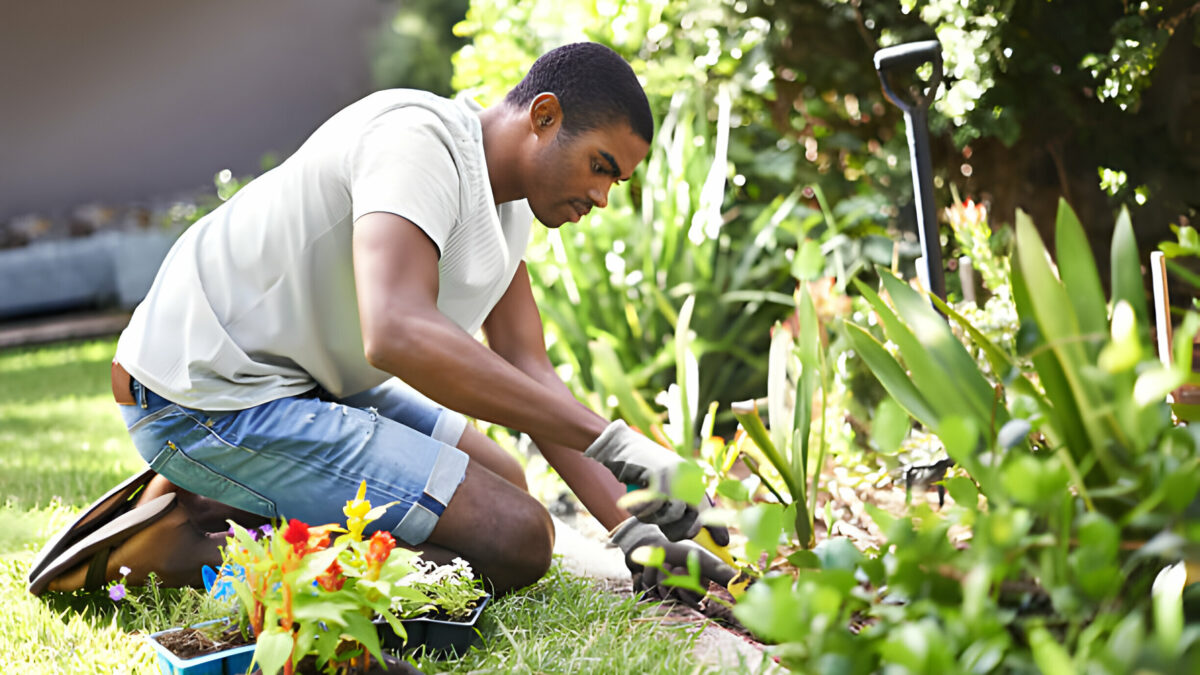Do you feel that unmistakable urge to connect more deeply with nature? Are you feeling drawn not just to the aesthetic charm of a well-designed garden but also towards its potential as an eco-friendly haven? As more and more homeowners are recognizing the importance of sustainable living, the demand for eco-friendly garden designs has soared. This blog post is a comprehensive guide to designing your eco-friendly garden, filled with tips from professional gardener, inspiring ideas, and essentials to keep in mind for creating your green patch of paradise.
A beautifully manicured garden doesn’t just add visual appeal to your home, it becomes your personal oasis, a tranquil corner where you can retreat at the end of the day. Imagine such a place that also contributes positively to the environment! Isn’t that the kind of homely outdoors you’ve been dreaming of? The following write-up will discuss the various elements you need to consider when designing an eco-friendly garden, helping you enrich your lovely abode with sustainability at its heart!
Why Choose an Eco-Friendly Garden?
An eco-friendly garden is more than just beautiful landscaping; it’s a lifestyle choice that reflects respect and love for Mother Nature. With the alarming escalation of environmental issues, every step towards sustainability makes a difference. Swapping your conventional garden for an eco-garden reduces your carbon footprint and helps you contribute to the environment’s wellness.
A well-designed eco-friendly garden can also be a sanctuary promoting biodiversity, supporting local flora and fauna, and fostering a truly balanced ecosystem. It can also offer you an opportunity to grow your own organic produce, saving you money and ensuring the food you eat is utterly fresh and free from harmful pesticides.
Lastly, eco-gardens introduce children to the concept of environmental conservation, sensitizing them to the importance of nature in the cycle of life, and imbuing valuable life-long lessons.
What Essentials to Consider?
When designing your eco-friendly garden, consider these elements: your local climate and soil type, using native plants, and incorporating sustainable practices such as composting, water harvesting techniques, and efficient watering schemes.
Choosing plants that thrive in your local climate and soil types ensures this setup’s success. These plants are naturally adapted to your local weather conditions, pests, and diseases, making them easier to care for and less dependent on artificial fertilisers or synthetic pesticides.
An efficient watering scheme is essential to save water. Consider drip irrigation or soaker hoses instead of conventional sprinklers to cut water waste. Incorporating rain barrels for water catchment is an excellent way to conserve water and reap the benefits of natural rainfall.
How to Encourage Biodiversity?
Encouraging biodiversity is at the heart of an eco-garden design. Attract indigenous wildlife by providing food, water, and shelter. A collection of native plants, birdhouses, bat boxes or bug hotels will create an inviting atmosphere for local wildlife.
Using native flowers and plants also works wonders for pollinators. They provide necessary habitat and food sources for butterflies, bees, and hummingbirds, which are vital to pollination and the growth of your garden.
Planning for diverse layers and calendar-long bloom times ensures there’s always something happening in your garden, keeping it vibrant and full of life throughout the year.
Are there any drawback to Eco-Gardens?
Despite its many benefits, eco-gardening has a few challenges that necessitate proper planning. It may take longer to establish, and the gardens might require more maintenance than traditional ones, especially in the initial stages. Ensuring biodiversity can sometimes invite unwanted pests. But remember, a truly eco-friendly garden embraces all aspects of nature, including these challenges. Pests become part of the circle of life in your garden’s ecosystem and often attract their natural predators, restoring balance naturally.
How to get started?
Start your eco-gardening journey by understanding your garden’s current ecosystem. Whether it’s the type of soil, the abundance of sunshine or the native plant species, get to know your garden intimately.
Seek advice from local gardening communities or hire a professional eco-garden designer if needed. Always remember, the journey to an eco-friendly garden is a gradual one. Allow your garden to evolve and mature at its own pace and appreciate the changes along the way.
Conclusion
Taking the eco-friendly route for your garden is a profoundly rewarding experience. Yes, it may require a bit more patience and effort than traditional gardening, but the result is a thriving and vibrant eco-system right in your backyard, bringing you closer to nature and contributing to the environment’s health.
The garden that once just added aesthetic appeal to your home now transforms into a meaningful, living entity, resonating with the hum of life and the buzz of biodiversity. It’s a garden that not only flourishes but also makes the planet flourish, a leafy paradise that truly understands the language of nature. So, are you ready to embark on this green journey?


